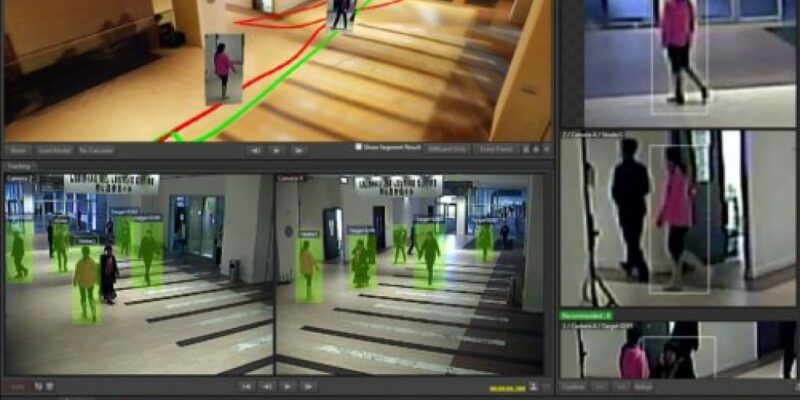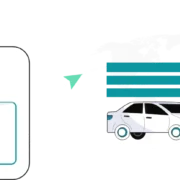Police video enhancement software refers to advanced technological tools designed to improve the quality of video footage, making it clearer and more detailed. This software is crucial in modern policing, providing law enforcement agencies with the capability to analyze video evidence effectively and efficiently. Enhanced video can reveal critical details that might be missed in raw footage, such as facial features, license plate numbers, and other identifying information.
Importance in Modern Policing
In today’s digital age, video footage is a vital component of criminal investigations. With the proliferation of surveillance cameras, body-worn cameras, and smartphones, the volume of video data available to law enforcement has increased exponentially. Enhancing this footage can significantly impact the speed and accuracy of criminal investigations, leading to faster resolutions and better outcomes in court.
Historical Context of Video Analysis in Law Enforcement
The use of video in law enforcement dates back to the mid-20th century, but it wasn’t until the advent of digital technology that video analysis became a cornerstone of modern policing. Early video enhancement methods were rudimentary, often involving manual techniques that were time-consuming and less effective. The development of sophisticated software tools has revolutionized this field, enabling real-time enhancement and detailed analysis that were previously unimaginable.
Technical Specifications
Core Features of Video Enhancement Software
Modern police video enhancement software typically includes a range of features such as noise reduction, frame interpolation, motion stabilization, and super-resolution. These tools work together to clarify and enhance video footage, making it possible to extract vital information from otherwise unusable videos.
Hardware Requirements
To run video enhancement software effectively, robust hardware is required. High-performance computers with powerful processors, ample RAM, and advanced graphics cards are essential. Additionally, specialized hardware like high-resolution monitors and dedicated storage solutions are often necessary to handle the large volumes of data processed.
Software Compatibility
Video enhancement software must be compatible with various operating systems and video formats. This ensures that law enforcement agencies can integrate these tools into their existing workflows without significant disruptions. Cross-platform compatibility is also important for collaboration between different agencies and departments.
User Interface and Ease of Use
An intuitive user interface is crucial for the effective use of video enhancement software. User-friendly design and comprehensive tutorials can help officers quickly learn how to operate the software, ensuring that they can focus on their investigative work rather than struggling with technical complexities.
Applications
Crime Scene Analysis
Enhanced video footage can provide detailed views of crime scenes, allowing investigators to piece together events with greater accuracy. This is particularly useful in reconstructing the sequence of events and identifying potential suspects or witnesses.
Identifying Suspects
One of the primary uses of video enhancement software is in identifying suspects. By improving the clarity of video footage, law enforcement can obtain clearer images of suspects’ faces, making it easier to match them with existing records and apprehend them.
Witness Testimonies
Enhanced video can corroborate or challenge witness testimonies, providing an objective record of events. This can be invaluable in court, where reliable evidence is crucial for securing convictions.
Traffic Incident Analysis
Video enhancement software is also used to analyze traffic incidents. Improved video clarity can help determine the causes of accidents, identify violating vehicles, and support the enforcement of traffic laws.
Surveillance Footage Analysis
Surveillance footage is a goldmine of information for law enforcement, but it often suffers from poor quality. Video enhancement software can improve the usability of this footage, aiding in the monitoring of public spaces and the prevention of crimes.
Forensic Investigations
In forensic investigations, every detail matters. Enhanced video can reveal minute details that are critical in solving complex cases, from identifying specific objects to understanding the interactions between individuals.
Benefits
Enhanced Image Quality
The primary benefit of video enhancement software is the significant improvement in image quality. Enhanced videos can reveal details that are invisible in raw footage, such as facial features, tattoos, and other identifying marks.
Time Efficiency
By automating the enhancement process, these tools save investigators a considerable amount of time. This allows law enforcement agencies to process more cases in less time, increasing overall efficiency and effectiveness.
Increased Accuracy in Investigations
Enhanced video provides a clearer and more accurate depiction of events, reducing the likelihood of errors in the investigation. This can lead to more accurate identifications and a higher rate of successful prosecutions.
Improved Case Outcomes
The use of high-quality video evidence can significantly impact the outcome of cases. Clear, detailed video can be compelling evidence in court, helping to secure convictions and ensure justice is served.
Challenges and Limitations
Technological Limitations
Despite the advancements in video enhancement software, there are still technological limitations. Extremely poor-quality footage may not be salvageable, and the enhancement process can introduce artifacts that may mislead investigations if not handled correctly.
Cost and Budget Constraints
Implementing video enhancement software can be expensive. High costs associated with purchasing software licenses, upgrading hardware, and training personnel can be a barrier for many law enforcement agencies, especially smaller ones with limited budgets.
Legal and Ethical Concerns
The use of enhanced video in criminal investigations raises several legal and ethical concerns. Issues such as privacy, the potential for misuse, and the admissibility of enhanced video evidence in court are significant considerations that need to be addressed.
Training and Skill Requirements
Effective use of video enhancement software requires specialized training. Law enforcement personnel need to be proficient in the technical aspects of the software to maximize its potential and avoid errors that could compromise investigations.
Latest Innovations
AI and Machine Learning Integration
Recent advancements in AI and machine learning have significantly improved video enhancement capabilities. These technologies can automatically detect and enhance important features in the footage, making the process faster and more accurate.
Real-time Video Enhancement
Real-time video enhancement allows law enforcement to improve video quality as it is being recorded or streamed. This can be particularly useful in live surveillance situations, where immediate clarity is necessary for timely interventions.
3D Reconstruction from Video
Innovations in 3D reconstruction technology enable the creation of three-dimensional models from two-dimensional video footage. This can provide investigators with a more comprehensive understanding of crime scenes and events.
Cloud-based Solutions
Cloud-based video enhancement solutions offer several advantages, including scalability, remote accessibility, and collaborative capabilities. These solutions can be particularly beneficial for agencies with limited on-site resources.
Future Prospects
Predictive Analytics in Video Analysis
The integration of predictive analytics into video enhancement software could revolutionize crime prevention. By analyzing patterns and trends in video data, law enforcement agencies could anticipate and prevent crimes before they occur.
Enhanced Interoperability Between Agencies
Future developments may focus on improving interoperability between different law enforcement agencies. Enhanced video analysis tools that can easily share and integrate data across jurisdictions will be crucial for coordinated crime-fighting efforts.
Advances in AI Capabilities
As AI technology continues to advance, its applications in video enhancement are likely to expand. Future software may be able to automatically identify and track individuals across multiple video feeds, significantly improving surveillance and investigative capabilities.
The Role of Quantum Computing
Quantum computing has the potential to revolutionize video enhancement by providing unprecedented processing power. This could enable the real-time analysis of massive amounts of video data, opening up new possibilities for law enforcement.
Comparative Analysis
Traditional Methods vs. Modern Software
Traditional video analysis methods relied heavily on manual techniques, which were time-consuming and often less effective. Modern video enhancement software automates many of these processes, providing faster and more accurate results.
Comparing Top Video Enhancement Tools
There are several video enhancement tools available on the market, each with its strengths and weaknesses. Comparing features, user reviews, and case studies can help law enforcement agencies choose the best tool for their needs.
User Feedback and Case Studies
Real-world case studies and user feedback provide valuable insights into the effectiveness of video enhancement software. These examples can demonstrate the software’s capabilities and help agencies understand its practical applications.
User Guides or Tutorials
Basic Steps for Using Video Enhancement Software
A step-by-step guide to using video enhancement software can help new users get started quickly. This includes instructions on importing video, applying enhancement tools, and exporting the improved footage.
Advanced Techniques for Forensic Analysis
Forensic analysis often requires advanced techniques to extract the most information from video footage. Detailed tutorials on these techniques can help law enforcement personnel maximize the software’s potential.
Tips for Optimizing Software Performance
Optimizing software performance ensures that video enhancement tools run smoothly and efficiently. Tips on hardware maintenance, software updates, and best practices for data management can help users get the most out of their tools.
Common Mistakes and How to Avoid Them
Understanding common mistakes and how to avoid them can prevent errors that could compromise investigations. This includes issues like over-enhancement, misinterpretation of enhanced details, and improper use of software features.
Conclusion
Recap of Key Points
Police video enhancement software is a powerful tool that improves the quality of video footage, aiding in criminal investigations and improving case outcomes. Despite its challenges and limitations, its benefits make it an invaluable asset for law enforcement agencies.
Future Implications of Video Enhancement in Policing
The future of video enhancement in policing looks promising, with advancements in AI, machine learning, and quantum computing poised to further revolutionize the field. These technologies will enhance the capabilities of law enforcement, leading to more effective crime prevention and resolution.
Call to Action for Law Enforcement Agencies
Law enforcement agencies are encouraged to adopt video enhancement software to improve their investigative capabilities. By investing in this technology and ensuring proper training for personnel, agencies can significantly enhance their efficiency and effectiveness in solving crimes.
FAQs
What is police video enhancement software?
Police video enhancement software is a tool used to improve the quality of video footage, making it clearer and more detailed. This software helps law enforcement agencies analyze video evidence more effectively.
How does video enhancement help in solving crimes?
Video enhancement improves the clarity of footage, allowing investigators to see details that may be missed in raw video. This can help identify suspects, corroborate witness testimonies, and reconstruct crime scene video analysis.
Are there privacy concerns with video enhancement software?
Yes, there are privacy concerns related to the use of video enhancement software. It’s important for law enforcement agencies to use this technology responsibly and ensure that enhanced video is used in compliance with privacy laws and regulations.
Can this software be used for live surveillance?
Yes, some video enhancement software solutions offer real-time enhancement capabilities, making them suitable for live surveillance applications.
How accurate is video enhancement software?
The accuracy of video enhancement software depends on the quality of the original footage and the capabilities of the software. While it can significantly improve video clarity, it’s not always possible to achieve perfect results.
What are the costs associated with implementing this software?
The costs of implementing video enhancement software can vary widely, depending on the specific tools and hardware required. Agencies should consider software licenses, hardware upgrades, and training costs.
Is video enhancement software easy to use?
Many video enhancement tools are designed to be user-friendly, with intuitive interfaces and comprehensive tutorials. However, effective use still requires some level of technical proficiency.
What are the legal implications of using enhanced video evidence in court?
Enhanced video evidence must be used carefully in court to ensure it is admissible. Legal considerations include the accuracy of the enhancement, the potential for introducing artifacts, and the need for expert testimony to explain the enhancement process.
How can agencies ensure the ethical use of video enhancement software?
Agencies can ensure the ethical use of video enhancement software by establishing clear policies and guidelines, providing proper training, and regularly auditing the use of the software to prevent misuse.
What are some real-world examples of crimes solved using video enhancement software?
There are numerous examples of crimes solved using video enhancement software, ranging from identifying suspects in robbery cases to reconstructing accident scenes in traffic investigations. These examples demonstrate the practical applications and effectiveness of this technology.
























Comments